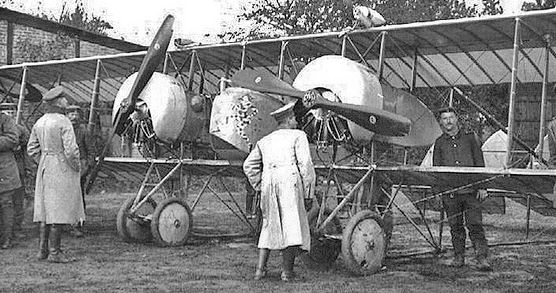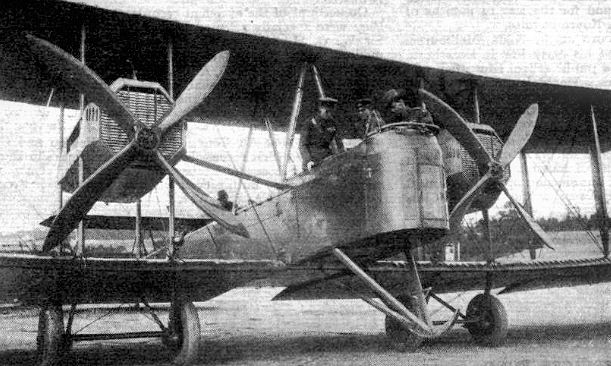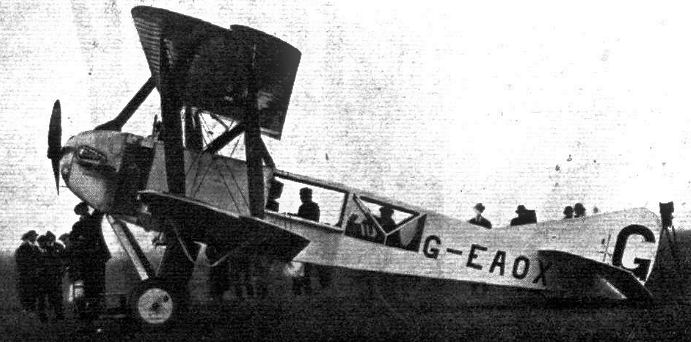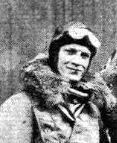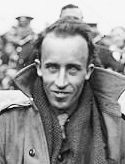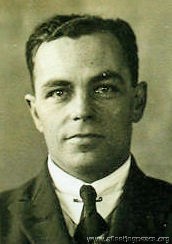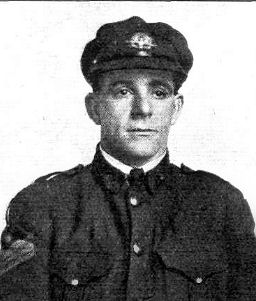The England to Australia Race 1919A Prize of £10,000 is offered for the first flight by an all-Australian Crew from Great Britain to Australia in 720 consecutive hours (30 days). --o-- Entry Fee: £100
Earliest Start Date: 8 September, 1919 The aircraft shall at all times be at the risk, in all respects, of the Competitor, who will agree to waive all claim for injury either to himself, his passenger, his aircraft, his employees, or workmen. |
||
|
|
||
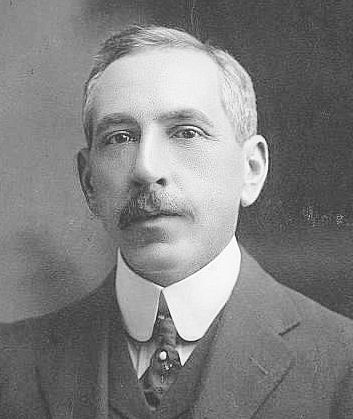
Australia's WWI Prime Minister, W M 'Billy' Hughes, was talking to some Australian airmen in Kent on Christmas Day 1918 who told him that, now the war was over, they would love to fly their aeroplanes back to Australia. Although Billy was concerned about the safety of such a journey, he was always convinced that aviation had a great part to play in Australia's future development, and he promised to see if his government could finance an air race. Which he duly did, although the 'Melbourne Age' newspaper described it as a "circus flight - a poorly disguised attempt at self-advertisement at the expense of the Australian public", and the 'Argus' felt there was no need to throw public money at a flight which "would soon become commonplace". Most people, however, saluted this rather daring attempt to link together the Old and the New World. In London, the 'Aircraft' magazine reckoned that "Our government might take a leaf out of the book of Australia". The route had more-or-less been surveyed, at least as far as India, by the RAF in 1918 at the instigation of Brig-Gen Amyas Eden Borton and Maj-Gen W G H Salmond. They then arranged for a ship of the Indian Navy to drop petrol and supplies along the rest of the route; unfortunately this ship exploded and sank after a couple of days (Gen Borton and Ross Smith were aboard, but luckily escaped). Setting out in another ship, this time they deposited supplies (having decided not to carry petrol this time) at various places as far as Thailand. Which only left 1,760 miles to the race's proposed end-point of Darwin (where there was, as yet, no landing strip, although admittedly it was being worked on). The organisers thought it would therefore be a good idea to have aeroplanes patrolling the coast near Darwin, to drop food and water (by parachute) to any "distressed airmen" who might get that far. --- Although he was not eligible for the £10,000, (being, in a sense, French), Etienne Poulet also decided to make an attempt to fly from France to Australia at the same time. After battling most of the way in his trusty old WWI Caudron, he was overtaken by the eventual winners (Ross Smith et al) in Akyab, Burma on the 29 November 1919 and abandoned his attempt a few days later. |
The Story of the Race
|
C 3023
Caudron G4 (2 x 80hp Le Rhone engines) |
Etienne Poulet |
Jean Benoist (mechanic) |
Left Villa Coublay airfield (nr Paris) 12 October 1919 08:15 Abandoned flight in Moulmein, Burma, 9 December 1919 |
|
02 G-EAKS
Sopwith Wallaby [later G-AUDU Regd. 19 Aug 1919 to Sopwith Aviation & Engineering Co Ltd Crashed Bali 17 Apr 1920 rebuilt]
|
Capt George Campbell Matthews |
Sgt-Mech Thomas Darrell Kay (mechanic, assistant pilot, assistant navigator) |
||
|
Left Hounslow 21 October 1919 11:44 Crashed 17 Apr 1920 in Bali - Sgt Kay sustained broken ribs. "When we started our momentous journey on October 22, London was enveloped in a pea-soup fog and there was an impenetrable haze over the Channel. We reached Mayence, near Frankfurt, without incident, but were forced by snow and rain to remain there for almost a month. The next start was to Vienna. We were forced to land in an open field, where we were surrounded by armed Yugoslavs, who took us prisoners and secured possession of our identification papers. On the fourth day, taking advantage of the temporary absence of the guard, we grabbed our papers and bolted for the aeroplane, and got away easily. After spending three weeks in Belgrade in the deepest despair a French aviator arrived, and he was reluctantly induced to let us have sufficient petrol to take us to Bukarest. In the vicinity of Adrianople temporary trouble with the petrol pump caused a forced landing in what from the air appeared to be a nice grass field, but as soon as the machine touched the ground it sank to the axles in a quagmire. Sergt. Kay located and repaired the fault, but we could only get away by Kay hanging on to the tail and making a flying jump for the fuselage at the take-off. We spent three days in Constantinople, but when giving the engine a final running trial a leak was found. With the aid of chewing gum, powdered asbestos, and copper wire we repaired the leak, and set off to Bagdad, with the engine in a rotten condition. After flying for three hours we encountered a tremendous sandstorm and were forced to land on the seashore, where the machine sank in soft sand. The nose tilted, and the propeller, axle, and longeron were smashed. With some angle iron from a fence we repaired the longeron, and with old iron bars spliced the broken axle. The rain and sun had warped the reserve propeller rather badly, and we were doubtful whether the shaken machine would stand the extra heavy drag. However, we decided to chance it, but were forced to land again in the blazing desert, under a scorching sun, that threatened to melt the aeroplane. We dragged it three miles to the shelter of an Englishman's verandah, and there fixed it up again. We started cheerily on the penultimate stage of the journey to Australia, but in the forced landing at Bali the wings were smashed, and all hope of completing the final stage of the journey to Darwin abandoned. " |
||||
|
G-EAOU Vickers FB.27A Vimy (2 x 350 h.p. Rolls-Royce Eagle VIII). F8630 later A5-1 Regd 23 Oct 1919 to Vickers Ltd Sold to RAAF 1922 |
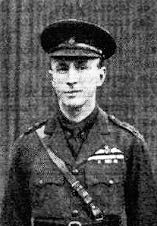
Capt Ross Macpherson Smith (Chief Pilot) |
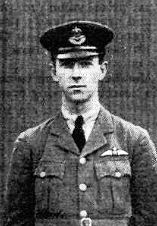
Lt Keith Macpherson Smith (Assistant pilot / navigator) |

Sgt James Mallett Bennett (mechanic) |

Sgt Walter Henry Shiers (mechanic) |
|
Left Hounslow 12 November 1919 09:05 Arrived Darwin 10 Dec 1919 (27 days, 20 hours) - First flight from Great Britain to Australia |
||||
|
G-EAOX
Alliance P.2/2 'Endeavour' Regd. 23 Oct 1919 to Alliance Aeroplane Co Ltd Crashed Surbiton 13 Nov 1919 |
Lt Roger Douglas |
Lt J S Leslie Ross (navigator) |
||
| Left Hounslow 13 November 1919
Crashed shortly after take-off from Hounslow - both men killed |
||||
|
G-EAOW
Blackburn Kangaroo aka B9970 Regd 24 Dec 1919 to Blackburn Aeroplane & Motor Co Ltd Crashed Suda Bay 8 Dec 1919 and abandoned. |
Lt Valdemar Rendle |
Lt David Reginald Williams |
Capt George Hubert Wilkins (navigator) |
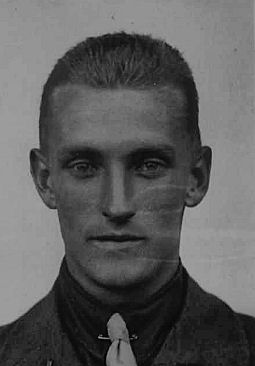
Lt Garnsey Henry Meade St Clair Potts (mechanic) |
|
Left Hounslow 21 November 1919 Crashed Suda Bay, Crete 8 Dec 1919 after engine failure - no injuries. |
||||
|
G-EAMR
Martinsyde A1 Regd 10 Sept 1919 to Martinsyde Ltd Crashed Corfu 9 Dec 1919, sank and broke up |
Capt Cedric Ernest Howell (pilot-navigator) |
Corpl George Henry Fraser (engineer) |
||
|
Left Hounslow 4 December 1919 Forced landing in the sea off Corfu 9 Dec 1919 after running out of fuel - both men killed |
||||
|
G-EAQM Airco D.H.9 'P.D.' Regd 31 Dec 1919 to RJP Parer/Hounslow aka F1278, later G-AUKI Preserved in the Australian War Museum |
Lt Raymond John Paul Parer |
Lt John Cowie McIntosh |
||
|
Left Hounslow 8 January 1920 Arrived Darwin 2 Aug 1920 Ray and John persuaded Scottish millionaire distiller Peter Dawson (hence the P.D.) to give them the money for an aeroplane, but only dared ask enough for an F.E.2b (although they would have preferred a DH.9). When Mr Dawson heard this, he scolded them and gave them another cheque. They were only the second crew ever to make the journey, and nearly didn't get there at all: "They were forced by fog to land at Conteville on their way to Paris, and when eventually arriving at the latter place, were delayed three days through a broken petrol pump. Two more days were lost at Lyons through the same trouble, and later when crossing the Gulf of Genoa, they had to turn back owing to running out of oil, flying about 100 miles with a dry engine before a landing ground could be found. On the way to Rome their machine caught fire at a height of 3,000 ft., and it was only by turning off the petrol and side slipping down that they managed to escape a terrible death. After more delays they reached Cairo on February 21, their flying time from Hounslow to Cairo being 39 hours. They had to make a forced landing in the Syrian Desert, and spent the night under their machine. In the morning they saw a group of Arabs advancing upon them, but succeeded in holding them off with revolver shots, and managed to get away. Ultimately Rangoon was reached on Easter Day. Continuing from Rangoon they crashed and damaged their machine so badly that it took six weeks to repair it. They now had to cross wide stretches of sea between the Dutch islands, and found difficulty in finding their way. However, just as they were running short of petrol, after an eight hours' flight, they sighted land, and landed at Fanny Bay, in the Northern Territory, Australia, on August 1. Port Darwin was reached the next morning. Ultimately Sydney was reached, but between Sydney and Melbourne they again crashed, this time to such good purpose that the machine was completely wrecked. Another machine was lent to them, on which they ultimately reached Melbourne, where they were given a great reception. They were welcomed by Mr Hughes, the Australian Premier, to whom, it may be remembered, they handed a bottle of whiskey, which they had brought with them from England, and which had survived all the different mishaps. As a token of the appreciation of their plucky flight they were presented with a cheque for £500 each." |
||||
Did Not Start:
| Sopwith Dove (80hp Le Rhone engine) |
Lt Bert Hinkler |
withdrew before start - regulations prevented a solo flight | ||
The Aviators |
|
Sgt-Mech Thomas Darrell Kay
|
||
|
b. 20 October 1884 in Creswick, Victoria, Australia. "Before enlisting in the Australian Flying Corps in 1915, Sgt Kay was employed as an engineer by Ronaldson and Tippett, machinery manufacturers, of Ballarat. He is known by many local residents" In 1922, in the sordid 'Ballarat Sensation', Sgt Kay had his face slashed by a razor wielded by Susanna Masters and her brother Maurice Wall. Susanna said she had lived with Kay, who "threatened to expose her to her husband because she had refused to marry him. She told Kay she could not marry a man already supporting two illegitimate children, and also accused of being responsible for another child in England". She reckoned that he was "lucky he did not get more. He is the worst type of man I ever met". He absconded from the hospital where he was being treated, and disappeared; Susanna (who reportedly had "a fine personality", whatever that means) and Maurice were eventually let off. d. 19 May 1963 |
| Capt George Campbell Matthews | ||
|
|
|
|
|
b. South Australia in 1883 Joined the 9th Australian Light Horse in 1914, took part in the disastrous Gallipoli Campaign, then joined the Australian Flying Corps. From 1923, joined QANTAS as a pilot (mainly on the Charleville to Cloncurry route) and then, in 1930, set up Matthews Aviation Pty. They originally had an Airco DH.4 (VF-UBZ), then a series of DH Moths (several of which they crashed), and finally a Saunders-Roe A.17 Cutty Sark VH-UNV and a Saunders-Roe A.21 Windhover VH-UPB, which they used on a regular service from Melbourne to Tasmania. Here is his Cutty Sark coming ashore at Hobart in December 1930:
However, the Windover drifted onto the rocks of King Island, Tasmania on the 13 May 1936. Became a Wing Commander in the RAAF in WWII. d. 27 Jan 1958 |
||
| Lt John Cowie McIntosh | ||
|
|
|
|
|
Co-pilot with Ray Parer in the England-Australia Race 1919 Killed shortly afterwards, sadly: "It is with the utmost regret we have to record the death, through an aeroplane accident in Australia, of Lieut J. McIntosh, who with Lieut. R. J. Parer, made that exceedingly plucky and sporting flight from England to Australia last year. It appears that Lieut. McIntosh, while making a cross-country flight, accompanied by his mechanic and a passenger, experienced engine trouble near Pithara (300 miles from Perth), and crashed after a nose-dive from about 2,000 ft. The mechanic also was killed, and the passenger injured." Neil Follett kindly contacted me to clarify this, thus: "He was flying an Avro 504, which crashed on take-off from Pithara where he was conducting joy flights. I think 200 feet would be more appropriate than the 2000 feet mentioned. Pithara is about 200 kms (120 miles) from Perth, as the crow flies." |
||


